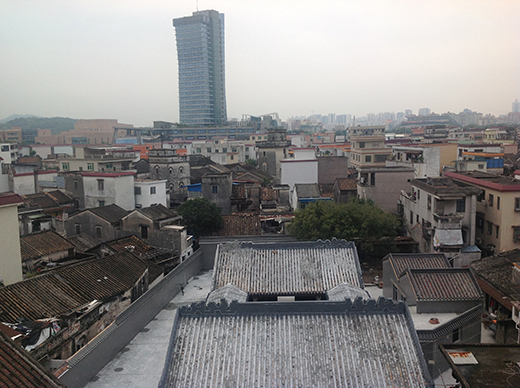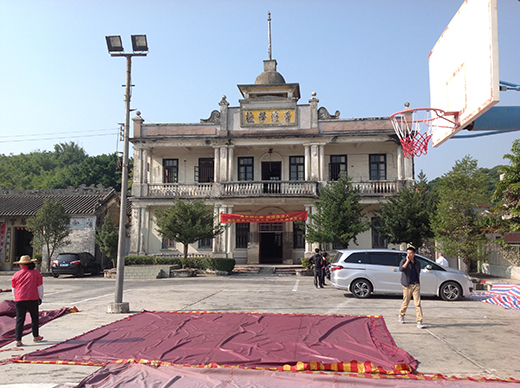The China-Australia Heritage Corridor
This project aims to show how buildings and places created by Chinese migrants in Australia and home places in China testify, beyond the narrative of arrival and settlement, to Australian connections with China and the Chinese diaspora. Using the 'heritage corridor' concept, it aims to develop a transnational approach to migration heritage and will provide tools and concepts for broadly documenting, analysing and interpreting Australia's migration heritage. The project aims to help a more cosmopolitan 21st century Australia capitalise on its legacy of regional linkages through Chinese migration.
Researchers: Associate Professor Denis Byrne (ICS), Distinguished Professor Ien Ang (ICS), Dr Michael Williams (ICS), Dr Alexandra Wong (ICS)
Funding: Australian Research Council (opens in a new window), Discovery Project
Period: 2017-2021
Project website: The China Australia Heritage Corridor (opens in a new window)
The Institute for Culture and Society has begun a new project to research the cultural heritage of Chinese migration to Australia in the 19th and 20th centuries (funded by the Australia Research Council, Discovery Project DP170101200). We recognise that this migration was not a one-way process but rather involved a backwards-and-forwards flow of people, knowledge, culture, goods, building practices, and money. Our focus will be on the migration of people from Zhongshan County (in Guangdong) to New South Wales. The project aims to enhance public awareness of Australia’s history of connectivity with Asia by showing how buildings and places created by Chinese migrants in Australia, were and are linked to buildings and places in China.
We plan to interview those now in Sydney/NSW with links to Zhongshan County (old, new, ancestral or recent). These interviews with Chinese Australians will examine their efforts to maintain links or to rediscover such links with their home villages in China and the importance that finding and identifying family-related buildings and places in these villages (e.g., houses, graves, ancestral halls) has in fostering a sense of multiple belonging (to both Australia and China).
We plan to record and study buildings and other heritage places associated with Zhongshan migrants both in Australia and in Zhongshan and we will record the stories and that go along with these sites. In NSW this will include the houses, business premises, association premises and other places associated with Zhongshan people. In Zhongshan itself we will focus on home villages and the houses, temples, schools, medical clinics and lineage halls that were built or renovated with money and other assistance from Zhongshan people in Australia.
We use the term ‘heritage corridor’ to highlight the connectedness of this built heritage across the space between China and Australia. We also, however, recognize that people from Zhongshan also settled in Southeast Asia and Pacific locations like Fiji, often on-migrating from there to Australia, and we are interested in these connections as well.

The Research Program
- Interviews . We hope to interview Zhongshan migrants and their descendants in NSW and Zhongshan about their migration experience and the places that are significant to them in both places.
- Heritage recording. We will record these places photographically and map their location. This information will be made available to Zhongshan community members, heritage managers, and other researchers via our website.
- Website. A bilingual (English and Chinese) website will display the places and stories recorded.
- Photographs and letters. We will make copies of photos, letters and other documents from Zhongshan migrant families (with their consent), especially where these relate to buildings and places.
- Heritage conservation. We will meet with heritage administrators and professionals from southern China, Hong Kong, and Australia to discuss and develop a networked, cross-border approach to managing and conserving this heritage record.
- Heritage interpretation. Interpretation materials will be developed to help visitors to migration heritage sites in Zhongshan and Australia better understand their significance.
- Ancestral village tours. The outcomes of the project will be available to Zhongshan migrant families and others visiting their ancestral villages in China.
- Zhongshan Community. Participation from members of the Zhongshan community is welcomed and encouraged in achieving and maintaining these outcomes for the future.
The Research Team
Dr Denis Byrne, Senior Research Fellow at the Institute for Culture and Society. Denis is an archaeologist working in heritage studies and conservation in Australia and Asia.
Professor Ien Ang, Institute for Culture and Society. Ien is a leader in cultural studies focusing on patterns of cultural flow and exchange in our globalised world.
Dr Michael Williams, Adjunct Research Fellow at the Institute for Culture and Society. Michael is a historian of the Chinese Diaspora and a founding member of the Chinese Australian Historical Society.
Dr Alexandra Wong, Research Fellow at the Institute for Culture and Society. Alexandra, who is of Cantonese descent, has expertise in the study of culture, urbanism and migration.
Contact Us
Alexandra Wong
Email: a.wong@westernsydney.edu.au
Phone: 0432 318 325 or
Denis Byrne
Email: d.byrne@westernsydney.edu.au
Phone: 0423 775 875
Photos of Zhongshan by Dr Michael Williams.





